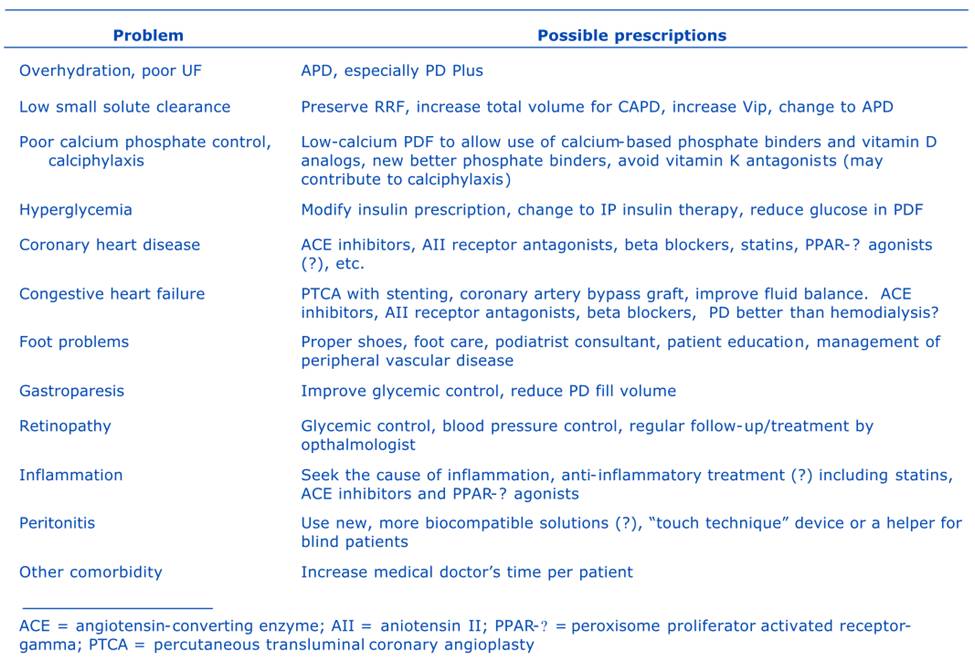When to Initiate PD in the Diabetic Patient
The most recent update of the KDOQI guidelines does not distinguish between the timing of renal replacement therapy for diabetics versus nondiabetics (1). The guidelines suggest that when patients reach stage 5 CKD (estimated GFR < 15 mL/min/1.73 m2), nephrologists should evaluate the benefits, risks, and disadvantages of beginning kidney replacement therapy (KRT). Particular clinical considerations and certain characteristic complications of kidney failure may prompt initiation of therapy before stage 5. These guidelines are based on the assumption that overall kidney function correlates with GFR. However, since the kidney has many functions, it is possible that any given function could decrease disproportionately to the decrease in GFR. Therefore, caregivers should be alert to signs of declining health, such as uremia, that might be attributable directly or indirectly to loss of kidney function and initiate kidney replacement therapy earlier in such patients.
Some of the reasons for the early intervention are the accelerated loss of residual renal failure during the advanced stages of chronic renal insufficiency among diabetics, earlier/amplified uremic symptoms due to gastroparesis, autonomic neuropathy and fluid overload (nephrosis, CHF), and an attempt to improve nutrition (2). Yao et al. have suggested an integrated approach to the care of the diabetic patient with ESRD (3) as outlined in table 1.
In conclusion, the initiation of dialysis therapy should rest on clinical judgment from clinical experience and consider the constraints of regulation and reimbursement. The recommended timing of dialysis therapy initiation should be designed to maximize a patient’s quality of life by extending the dialysis-free period while avoiding complications that will reduce the length and quality of dialysis-assisted life.
Table 1: Integrated approach to the care of the diabetic patient with ESRD
Adapted from reference 3
References:
- KDOQI Clinical Practice Guidelines and Clinical Practice Recommendations for 2006 Updates: Hemodialysis Adequacy, Peritoneal Dialysis Adequacy and Vascular Access. Am J Kidney Dis 48:S1-S322, 2006 (suppl 1).
- KDOQI: Clinical Practice Guidelines for Peritoneal Dialysis Adequacy. Am J Kidney Dis 1997;30:S67-S136.
- Yao Q, Lindholm B, Heimburger O. Peritoneal dialysis prescription for diabetic patients. Perit Dial Int. 2005 Feb;25 Suppl 3:S76-9. https://www.ncbi.nlm.nih.gov/pubmed/16048263
- P/N 101808-01 Rev A 06/2012

